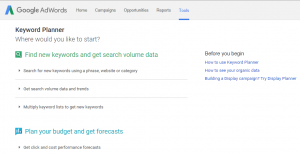 Image courtesy of Entrepreneur
Image courtesy of Entrepreneur
For businesses, especially small businesses, the rapid increase in e-commerce sales is a two-edged sword. On the one hand, increased sales mean higher revenues but, on the other, shipping costs and the handling necessary to turn around orders quickly strain the business processes of nearly every e-commerce player. Shipping integration eases the burdens associated with e-commerce fulfillment but achieving integration isn’t easy. Today, we focus on shipping integration and how to implement a process in support of your e-commerce business.
Online shopping
For decades, ever since ready access to the internet became a reality, experts predicted a marked shift from physical shopping to online shopping. Unfortunately, the reality was slow to match the bullish attitude of these experts toward online shopping. This year might change that for good.
When it comes to shopping, the share of online shopping grows by leaps and bounds, especially during the pandemic. And, it’s unlikely consumers with their growing appreciation for the convenience of e-commerce, will change back to shopping in brick and mortar store once relieved of shutdowns and fears of the virus. Face it, it’s just too easy to shop at midnight in your pajamas. That’s why experts estimate the global e-commerce sector will see $ 26 trillion in sales in 2020.
However, with a staggering 110,000 e-commerce websites online, you’ve got some pretty serious competition. And, big players like Amazon, eBay, and Walmart make competing in the e-commerce space even more challenging as they offer a broad range of products with free shipping once the minimum order size is reached.
Competing for the online shopper
Meeting expectations is a sure-fire way to win customers and keep them. And, when the likes of Amazon offer same-day shipping or free standard shipping, it is essential to have an effective shipping strategy in place to keep with rising customer expectations.
Not only do customers want products quickly, but they’re also increasingly resistant to paying shipping costs, which are substantial. Our logistic system was never created to handle the single box but to ship entire truckloads or containerloads of material to a central hub where retailers distributed the goods to consumers who transported them the last mile in personal vehicles. It’s this “last mile” in the logistics chain that involves the most cost. In fact, one study found the average cost of that last mile in 2018 was a little over $ 10.
The question then is, how do you improve your shipping performance to match these large competitors?
One way to improve shipping performance is to implement e-commerce shipping software and best-practices that allow you to seamlessly connect your e-commerce platform with multiple carriers to both speed delivery and choose the most cost-effective option.
Here’s why e-commerce shipping integration is necessary for your business to perform well.
Why use e-commerce shipping integration?
Improves the customer experience
You have a number of competing priorities to manage but getting products to customers quickly must bubble to the top of your priority list. Customers trained by larger competitors expect delivery by the next day with some retail businesses offering same day delivery/pick up for in-stock items. Being able to access a range of shipping provider options you put your customer’s order into the hands of the carrier that offers the most suitable option to meet customer demands.
If your customer needs the product quickly, you choose a courier with a fast-moving network that helps get the package to its final destination promptly.
For customers looking to maximize the cost savings on their orders, find the cheapest options from among available options.
Further, certainty goes a long way to improve the customer experience. Choosing carriers with great tracking and performance that meets promised delivery windows makes customers happy even in their delivery isn’t quite as fast.
It’s cost-effective
In every business, monitoring your bottom line profits is essential and shipping is a major cost item. So, if you can experience savings through shipping integration, it makes perfect sense to use this tactic.
By employing economies of scale, you can obtain better prices from your shipping providers.
If you run a small business, you may only be moving enough stock to have a relationship with one shipping provider. However, if you have a large volume of orders going out, it often makes sense to connect with multiple carriers.
Different couriers offer varying rates on options such as location and package size.
By using these integrations you connect your e-commerce platform with several different shipping providers. Once connected, you can find the best price for your orders so you always have the best deal on your shipping.
E-commerce shipping integration allows you to offer multiple delivery options
Customer expectations surrounding delivery cause considerable challenges when converting e-commerce sales. With major online retailers offering shipping options that are either free, very cheap, or fast, you need options that suit the specific needs of the customer.
Offering a variety of options that appeal to customers with different needs might help clinch the deal.
Having e-commerce shipping software means you make the best use of the best prices or most convenient courier options. This translates into multiple shipping options that appeal to a broader range of customers.
Shipping integration allows you to enjoy the best features from your couriers
Shipping carriers vary not only in their prices but other features offered. The features that one company may offer may be different from one another.
When you have multi-carrier shipping software at your disposal, you enjoy the benefits that suit the needs of your customer.
For instance, your e-commerce business may stock a wide variety of different products in all shapes and sizes. For smaller items, you may want to opt for a conventional mail service or courier. Whereas, for larger items or for items that need refrigeration you need to use a courier that offers these options. Or, when making larger shipments to retailers or small businesses, click here to find out about pallet shipping which reduces costs from shipping and handling, while keeping orders together/
The delivery address also plays a part in choosing a shipping provider. For customers living in dense urban areas, using a multi-drop courier helps you get the order out to the customer in the shortest time. For rural addresses, use a carrier network that offers the widest coverage.
Digital & Social Articles on Business 2 Community
(13)






